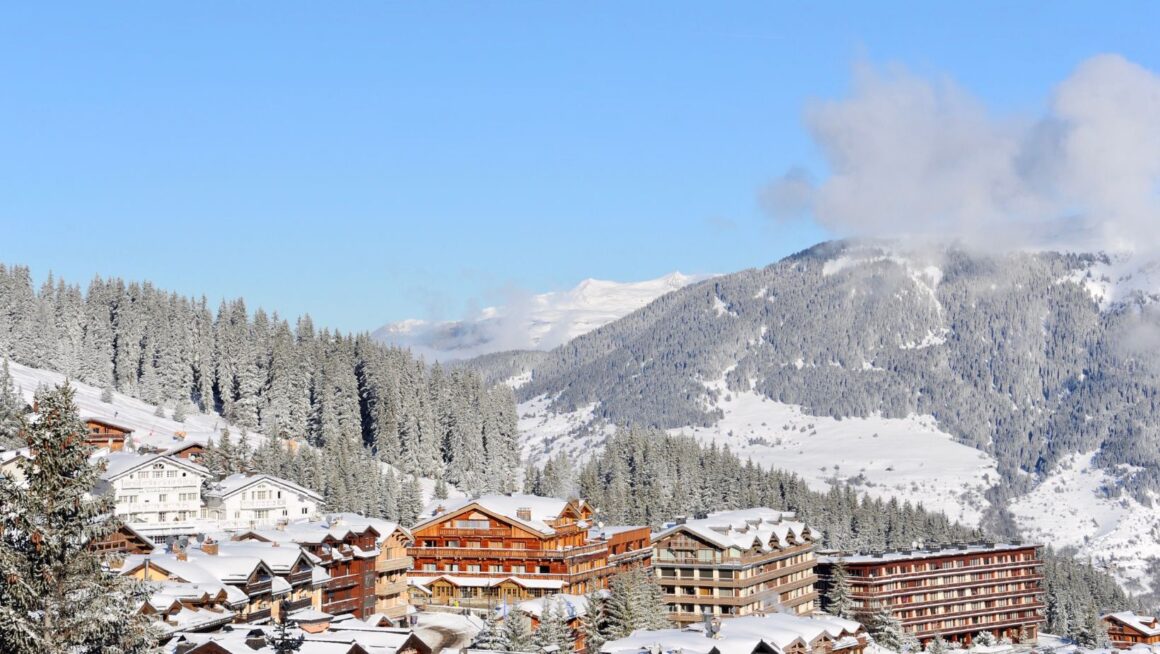The Alps span eight European countries, making it one of the most culturally diverse and scenic regions on the continent. Many travelers envision the Alps to be one place, one mountain range; however, in reality, it’s so much more. Each region boasts unique cuisine, scenery, traditions, and character, whether it’s in France, Switzerland, Italy, Austria, Germany, Slovenia, Liechtenstein or Monaco. Truly, traveling through the Alps is like traversing the connecting pieces of a puzzle developed over centuries of culture, diverse languages, and integrated geographic appeal. This article outlines the major regions and what makes them special – understanding that every single valley, village and slope possesses its own memorable character.
The French Alps – Grandeur, Gourmet Culture and Legendary Resorts
The French Alps have grandeur. Private transfer from Geneva to Val Thorens makes it effortless to reach some of the region’s most iconic high-altitude resorts, where dramatic peaks and refined French alpine culture meet. This area is home to Mont Blanc, the tallest peak in all of Western Europe, and some of the most spectacular mountain views in the entire range. Towns such as Chamonix, Val d’Isère and Annecy combine adventure and elegance with a bit of skiing, climbing or hiking for everyday travelers. French culture boasts much in the way of food, with high-end versions of tartiflette, raclette, and cheesy fondue made from local cheeses cultivated in the areas. This region varies from bustling resorts filled with après-ski vibes to quiet lakeside towns where shutters and stone walls boast centuries of existence. The French Alps possess a bold, confident and stylish atmosphere where adventure is the name of the game but always in tandem with cultivated living.
The Swiss Alps – Perfection, Precision and Postcard Quality
Swiss Alps mean postcard perfection – crystal clear lakes, pristine paths, panoramic train rides and towns that make you feel like you’ve just entered a postcard. The Swiss Alps offer luxurious organization with stunning views and ease of travel, making them ideal for first-time visitors seeking all of the major highlights. Regions such as Zermatt, Lauterbrunnen and St. Moritz offer something different – Tall peeks of the Matterhorn, valleys filled with beautiful waterfalls crashing down cliffs. Swiss life embodies organization, cleanliness and rich craftsmanship from wooden chalets to artisan cheese factories. Travel through luxurious trains to take in the best views or hike through fields of wildflowers and settle into a spa looking onto icy blue lakes – tranquility, precision and postcard perfection awaits at every turn in the Swiss Alps.
The Italian Alps – Warmth, Flavor and Mediterranean Soul in Mountainous Form
The Italian Alps combine the ruggedness of high peaks with the warm embrace of Italian culture. This area feels especially alive and vibrant with flavors, rich culture, boisterous towns and a chill ambiance where exploration begs for savoring. The Dolomites are one of the most famous regions known for their pale limestone spires that glow pink at sunset. Valleys such as Aosta and South Tyrol combine Italian and Alpine essence for a mix-and-match perspective. Food reigns supreme everywhere – from polenta to speck to hearty stews – and pasta dishes gain new life from mountain grown herbs and fresh dairy products. The Italian Alps emphasize hospitality – from boutique hotels to family-run inns to rustic rifugios for ultimate appeal that feels luxurious but also deeply personal for every individual guest. Mountains, culture and flavor reign supreme here in a way that’s distinctly and deliciously Italian.
The Austrian Alps – Charming Villages, Music, and Storybook Scenery
The Austrian Alps are picture-perfect. The rolling green meadows, wooden chalets with carved-in balconies, and tranquil valleys that stretch for miles make it feel like an area frozen in time with a more traditional, comforting vibe. In addition, this region is known for many cultural traditions – from folk music and handcrafted lederhosen to alpine festivals and some of the friendliest hospitality in Europe. Innsbruck, Zell am See, and Hallstatt are towns offering picturesque lakeside or mountainside locations with historical significance and Baroque architecture. Austria also prides itself on wellness through thermal spas, mountain saunas, and relaxing retreats where time moves slowly. Whether skiing in Tyrol or tracing summer hiking paths, the Austrian Alps feel homier and accessible to anyone seeking an authentic, heartfelt Alpine experience.
The Bavarian Alps – Fairytale Views and Cultural Depths
The Bavarian Alps in southern Germany blend the best of the Alpine mountains with a fairytale quality. Dramatic scenery spans the eye while incredible cultural landmarks heighten the experience – Neuschwanstein Castle is the castle featured in Disney’s Sleeping Beauty. Bavarian culture is quite boisterous and welcoming – with centuries of tradition defining folk festivals, beer gardens, robust cuisine, and ornate village churches. Compared to sharper peaks elsewhere in the region, the Bavarian scenery appears softer – rolling hills, emerald lakes, and forests sway around the quaint towns. This region is a perfect home base for those who appreciate culture as much as nature – with picturesque hiking trails that end with pretzels, sausages, and locally brewed beers in local cheerful and welcoming establishments.
The Slovenian Alps – Underrated Splendor With a Welcoming Spirit
The Slovenian Alps are arguably one of Europe’s best-hidden gems – boasting pristine landscapes, sustainable tourism (thank you international groups for green developments), and a relaxed, welcoming feel. The Julian Alps boast towering limestone peaks home to Lake Bled, Lake Bohinj, and Triglav National Park – three of the most remarkable natural areas in any region. Slovenia offers a blend of Mediterranean culture with Slavic hospitality – a combination that feels both known yet welcomed with newness. Travelers can enjoy quiet trails, secluded yet hospitable mountain huts, and unspoiled nature without the crowds that taint prettier areas in other countries. The Slovenian Alps feel like an affordable, authentic destination in one of Europe’s greenest and friendliest countries!
The Liechtenstein Alps – Small but Big Mountain Landscape
Liechtenstein might be one of the smallest countries in the world, but its experience is just as large as its neighboring nations. Sandwiched between Austria and Switzerland, it takes on the best of each country’s traditions but still remains its own nation. The capital city is Vaduz with a castle overlooking the town and rolling vineyards down below. Hillsides are covered in woodsy paths and vast hiking trails. With a country this small, one can get a lot done in just a few days, switching up landscapes in hours making this area ideal for the most adventurous types who like their travels intimate and devoid of any crowds. Liechtenstein might not boast the tallest mountains – unlike its neighbors – but it’s quaint, peaceful and cultured enough to give it its own Alpine persona.
The Monaco Alps – Glamorous Adjacent Entrance to the Mountains
While Monaco might not be a mountainous country, it certainly acts as an entryway to the southernmost Alps while remaining best known for luxury yachts and Mediterranean glamor with many thrusting up into the dramatic, coastal roads quickly leading to the mountains. Monaco’s marble mansions are mere miles away from limestone peaks creating a Mediterranean air one could experience in the morning before transitioning to a more rugged terrain before lunch. It’s a sophisticated yet daring space that allows for interesting contrast along the southern reach of the Alps.
Why Each Region Needs a Stop Over in Your Travels.

The beauty of the Alps is that every region is separate yet together for a reason. One area might boast the highest peaks while another has the most culture, another boasts silent valleys while yet another encourages culinary wonders. It’s all part of the magic of only witnessing a small piece at a time over many travels as opposed to just one. The mountains find ways to not only captivate travelers through sights, sounds, tastes, traditions and paths but also enable their travelers to feel like more than just someone passing through. It’s as if you have to truly become one with each region instead of just passing through on an itinerary because the Alps are not one destination – they’re many, awaiting the discovery of their own worlds within themselves!
The Rhône-Alpes – The French Gem of Lakes, Vines, and Mountains
The Rhône-Alpes region boasts one of the most varied terrains in France, making it a great stop on any Alpine tour. The mountains blend with rolling vineyards and sunny plains along with lakes such as Lake Annecy and Lake Geneva. One can explore medieval villages in the morning, kayak in the afternoon, and sip wines in the evening from those same rolling foothills. Furthermore, it’s one of the easier regions to get to Mont Blanc and surrounding mountains of Chamonix for best-in-world adventure and best-in-class French culture. Thus, Rhône-Alpes is a dynamic place, blending mountain energy with provincial tranquility and charm that brings the best of all worlds to travelers who want something fast paced yet relaxed and satisfying at the same time.
The Dolomites – Italy’s Pale Mountains and UNESCO World Heritage Site
The Dolomites are unlike any other part of the Alps. From the incredible limestone peaks that turn pink and orange at sunset/sunrise known as “alpenglow,” the Dolomites are a UNESCO World Heritage Site that almost appear out-of-this-world. Towering rock structures intermingle with rolling meadows and deep valleys that take one’s breath away. Furthermore, the culture is something straight out of Italy as those who live here speak Italian, Ladin, and Tyrolean; thus, language, food, architecture, and tradition differentiate many elements on every corner. One can hike ridgelines for dramatic pictures or through WWI tunnels in steep mountains looking to learn something new about history or simply enjoy a meal at one of the many alpine huts serving dumplings, speck, and homemade strudels. Thus, the Dolomites are scenic and distinct from the rest of the Alps with an ethereal sense of culture that makes it one of the best parts of the whole region.
The Tyrolean Alps – Austria’s Heart of Mountains, Adventure, and Community
The Tyrolean Alps are the heart of Austrian culture when it comes to mountains. They dominate western Austria and stretch down into northern Italy for a robust experience known for its hospitality, outdoor life, villages that look like they’ve been plucked from a fairytale and great appeal for dynamic activities. In summertime, Tyrol becomes a hiking and biking mecca where beautiful valleys are explored through lush pastures and high mountain trails. In wintertime it becomes one of the best skiing spots in the world, great snow, vibrant ski towns with apres ski fun and charming mountain huts. Tyrolean culture runs heavy – folk music, traditional clothing, heavy meals, local festivals – creating an unparalleled sense of community that travelers feel a part of almost immediately. Thus, Tyrol is where alpine tradition runs best if one is looking for something a bit more authentic to everyday life.
The Julian Alps, Pristine Wilderness and Slovenia’s Natural Crown Jewel
The Julian Alps, Slovenia. This is for the traveler who wants natural beauty without development. This is some of the most gorgeous limestone mountain ranges, glacial lakes, forests, and even the Soča River, known for its emerald waters. Where other Alpine areas are more developed and touristy, this region has taken sustainable tourism and environmental preservation to another level where hiking paths aren’t overcrowded, mountain huts aren’t frequented by many, and chamois or ibex are seen in their natural habitats. The towns throughout the region also embrace Slovenian culture with homemade meals, open-air vibes, and conventional practices. Thus, these people and places seem natural to be there as if they belong instead of created and fabricated like other regions are praised for doing. Therefore, in addition to similar fantastic views boasted by other sites, this is a breath of fresh air.



